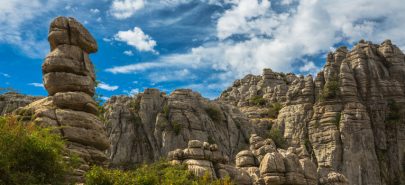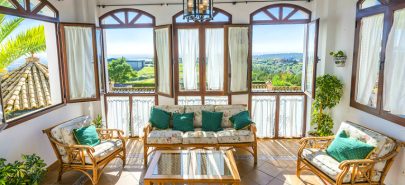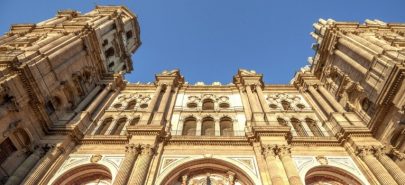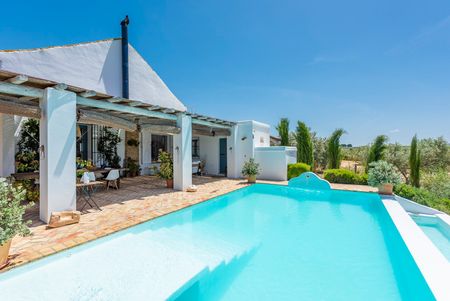Seville Cathedral is the biggest Gothic cathedral in the world. Discover what you must know before visiting this jewel in Andalucia’s capital city.
Various features make the Cathedral de Santa María de la Sede an unmissable stop if you’re planning to visit the capital city of Andalucia. Among them, the fact that it is the third biggest Cathedral in the world, that it was declared World Heritage Site by the UNESCO in 1987 and that it houses the tomb of Christopher Columbus. Are you ready to discover all of them?
Where is Seville Cathedral and how to get to it<
First of all, you need to know where the Cathedral is and how you can reach it, to plan your tour around the city (if interested, check out what to do in Seville in two days).
The Cathedral lies in the city centre of Seville, in Avenida de la Constitución, close to the Canal de Alfonso XIII river.
The best way to reach it is on foot, as you can make the most of the walk and take a look at other magnificent landmarks. If you’re reaching Seville by bus (which usually stops at Plaza de Armas bus station), you can reach the Cathedral after a 1.5 km-walk, following Calle Arjona, turning left on Calle Adriano and then Calle Arfe.
From Sevilla Plaza de Armas bus station, you can also take a bus: the line 3 towards “Bellavista” stops at “Paseo Cristóbal Colón”; then, you can walk through Calle Dos De Mayo until you reach the Cathedral. Or else, walk until you reach Plaza Nueva from Plaza de Armas, and then take the bus line T1, which leaves you at the India Archive.
On the other side, if you get to Seville by train (therefore arriving at Sevilla Santa Justa), you can take the bus line 21, direction “Plaza de Armas” and stop at “Menéndez Pelayo”. From here, walk 800 metres to the right until you reach the Cathedral.
Who built Seville Cathedral: the history
The 12th-century Almohad mosque was actually used as a church from 1248 (when Christians conquered the city) until 1401, when it was demolished (an earthquake destroyed part of it in 1356) to build a church that would be only Christian.
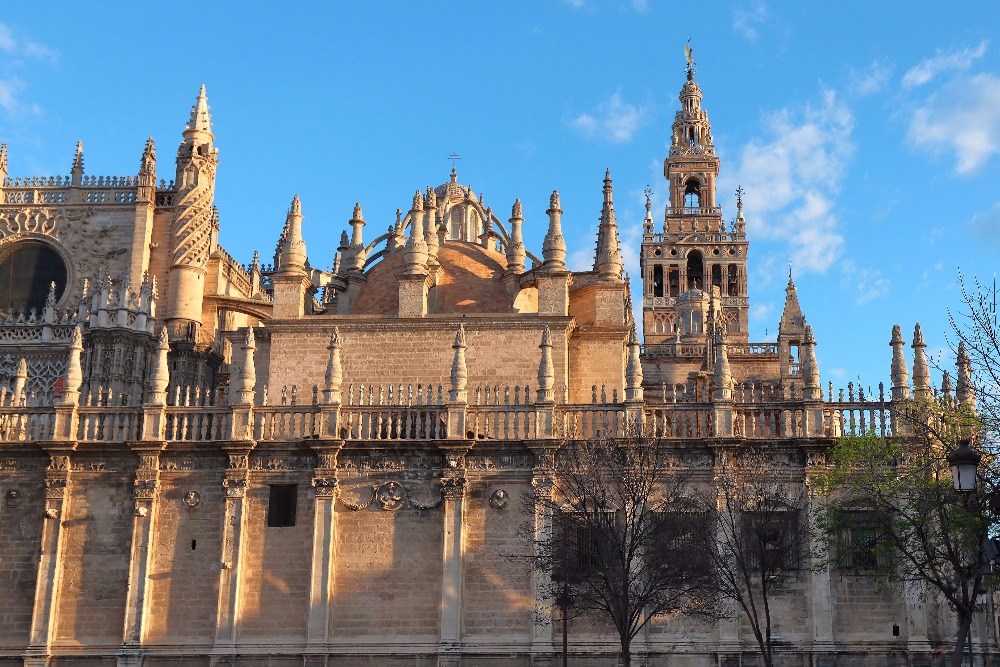
The only parts of the original mosque that were kept are the Orange Trees patio and the two lower thirds of the bell tower, which nowadays is known as Giralda (“that which spins”). This is the name of the weather-vane on top of the tower (El Giraldillo), which was added during the works to the original minaret together with the top part, where the bells are located. The name later passed to identify the whole tower.
The works officially ended in 1506, although the Cathedral got implemented during more than 500 years and five stages: Gothic (1403-1528), Renaissance (1528-1593), Baroque (1618-1758), Academic (1758-1823) and Neogothic (1825-1928).
Nowadays, the Seville Cathedral and the Giralda are the city’s most visited monuments as they, together with the Alcázar and the India Archive, are the only parts of Seville declared World Heritage Site by the UNESCO.
How big is Seville Cathedral
With 11,500 cubic metres, the Seville Cathedral is the biggest Gothic cathedral in the world, and the third largest cathedral in the world, following St Peter’s in Rome and St Paul’s in London. It is 76 metres wide and 116 metres long and, thanks to the presence of the Giralda, it reaches the impressive height of 104 metres. As you can easily imagine, the Giralda can be seen from almost every point of the city, thus converting into Seville’s most famous landmark.
- From Tuesday to Saturday: 10:15 am – 6 pm
- Sundays: 2.30 pm – 6 pm
- July 17th and 25th: opening 11:30 am
- Closed: January 1st and 6th, and December 25th
- Adults: €12
- Retirees and students <25 y.o.: €7
- Younger than 14 y.o. when accompanied by an adult, people with reduced mobility: free
- Cathedral
- Giralda
- Orange Tree Patio
- Church of El Salvador (600 mt from the Cathedral)
On May 26th (Corpus Christi) and May 30th (San Fernando), the church remains closed to visitors. However, you can still access the Giralda.
Must-see’s of Seville Cathedral
Although the visit to the Cathedral may take a lot of time, these are the must-see’s you surely don’t want to miss out on:
La Giralda and El Giraldillo
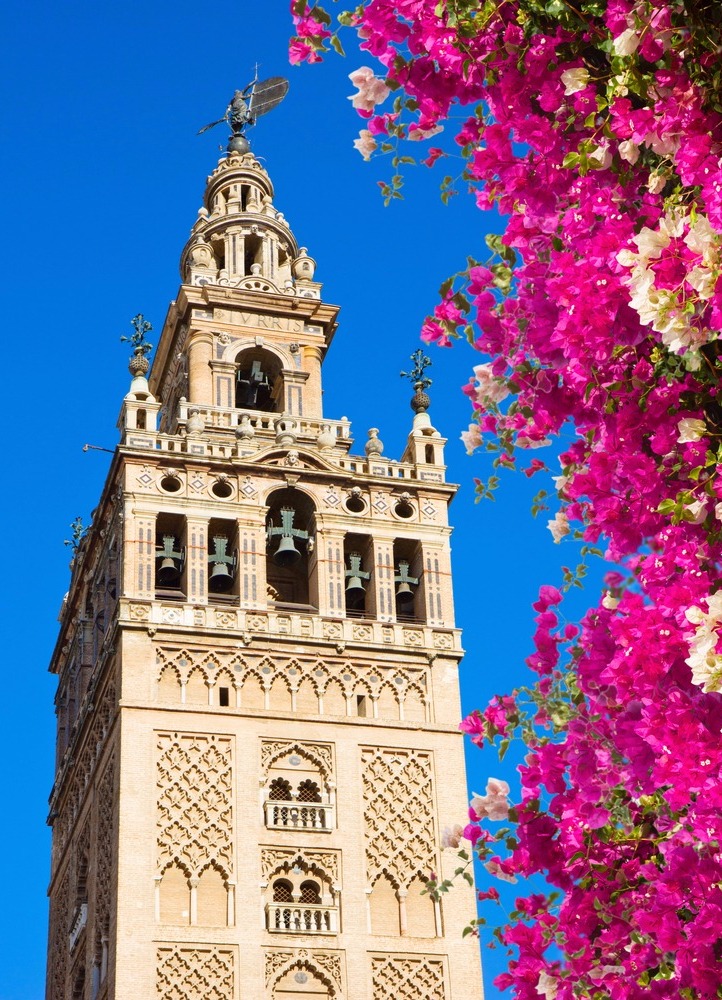
You can access the 24-bell tower of Seville from the northeastern side of the Cathedral, through various ramps and 17 steps in the last stage. This was made for the guards to reach the top of the tower on horseback. The Giralda is topped by the weathervane El Giraldillo, which represents faith.
Tomb of Christopher Columbus
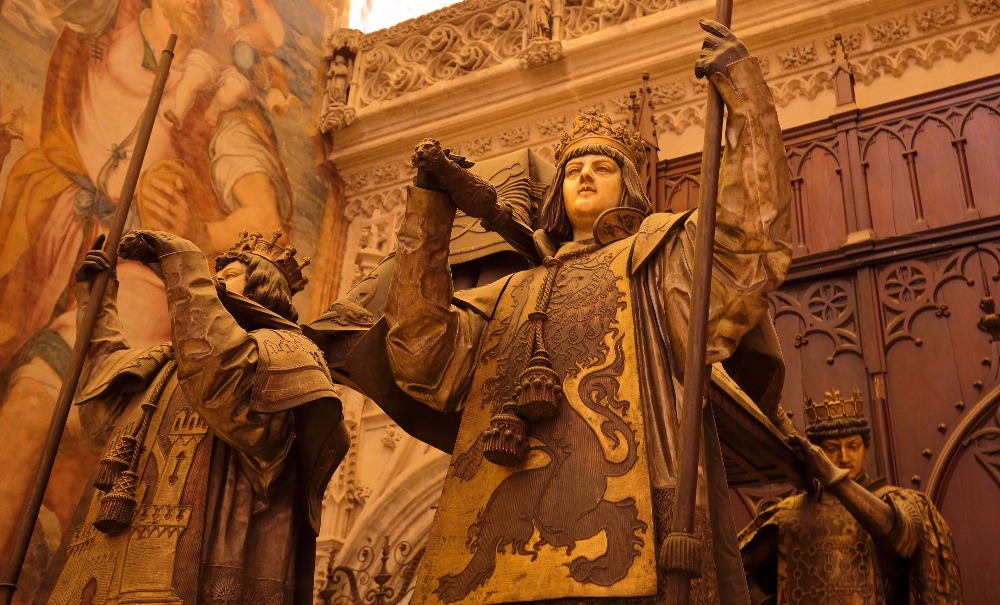
Not everyone knows that Seville Cathedral houses the monumental tomb of the great explorer after his remains were moved from La Habana, in Cuba. As a matter of fact, this was only the last move, as they passed from Valladolid (where Columbus died in 1506) to the Cartuja Monastery in Seville to Santo Domingo and the Caribbean Island.
The final stage of Columbus’s bones’ journey ended in 1898 when a marble and bronze mausoleum was built to protect them. The tomb is located near the Cathedral’s main entrance, inside the left Puerta de los Príncipes (Door of the Princes).
Capilla Real
The Cathedral’s Real Chapel, which faces east, is dedicated to the Virgin de los Reyes (Seville’s Patron Saint). In front of the altar, you will find the tomb of King Ferdinand III, who snatched the city from the Moors, while on the side, there is the tomb of Alfonso the Wise.
Capilla Mayor
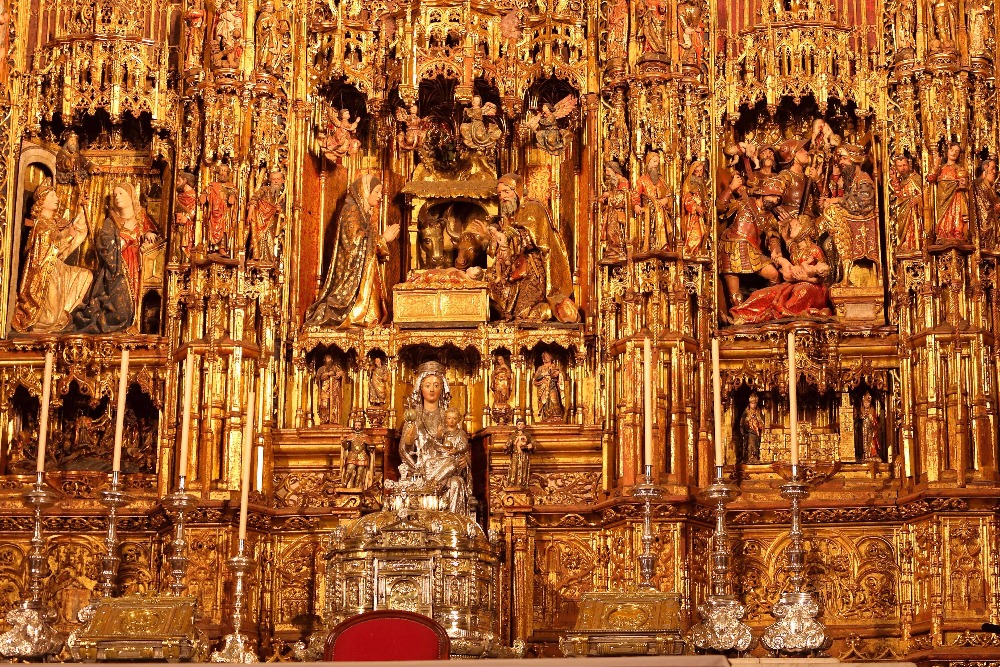
The most striking feature of the Cathedral’s Main Chapel is the staggering Retablo Mayor, a 1482 masterpiece representing 1000 scenes of Christ’s life and the Bible, as well as an image of the Virgin of the See (the Cathedral’s patron). It was started by the Flemish painter Pedro Dancart, and it is considered the biggest altarpiece ever made.
Puerta de la Asunción
After enjoying the beauty of the Capilla Mayor, turn around and get close to the Puerta de la Asunción, on the exact opposite. This door is open only during the Holy Week, to let the brotherhoods enter the Cathedral.
The Orange Tree patio
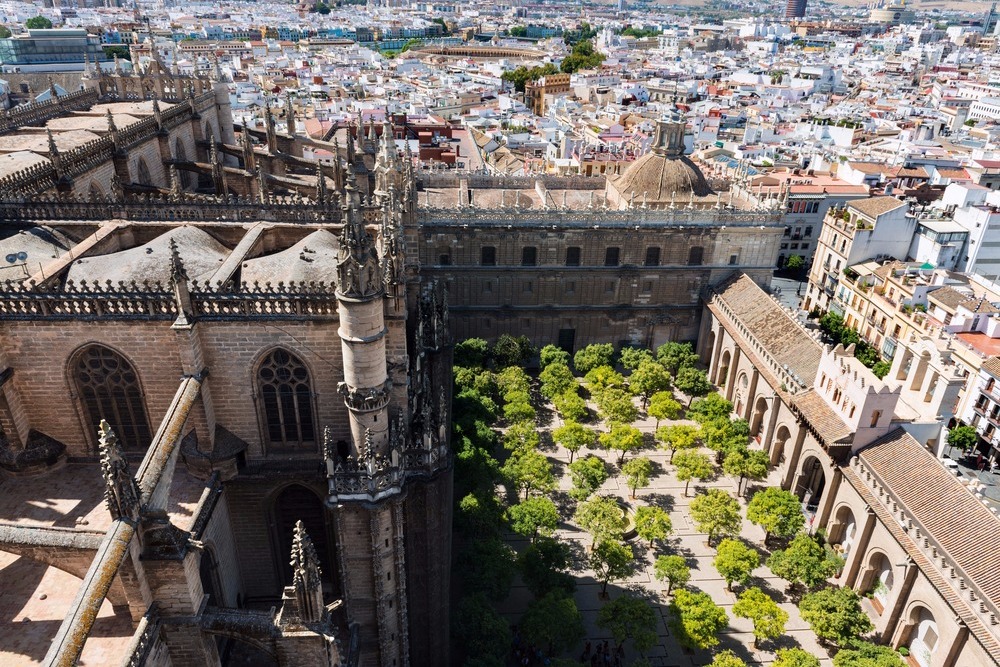
Before exiting the Cathedral, make a stop in the magnificent Patio de los Naranjos. Just like in the other cathedrals in Andalucia, the patio is the remaining of the ancient courtyard of the Moorish mosque. It houses 60 orange trees and a Visigothic fountain in a 3500 square metre enclosure. You can end your visit to the Cathedral by leaving through the Puerta del Perdón.
Dress code to enter Seville Cathedral
Despite the fact that there doesn’t exist an actual dress code to enter the Seville Cathedral, visitors will have to respect this holy place, just like they would anywhere else. Therefore, in summer, women are advised to wear a kerchief on the shoulders, as well as a below-the-knee shirt or trousers. The same indications are valid for men, too.
The poster below is displayed at the entrance of the Cathedral, for all the visitors to know how they are expected to dress.
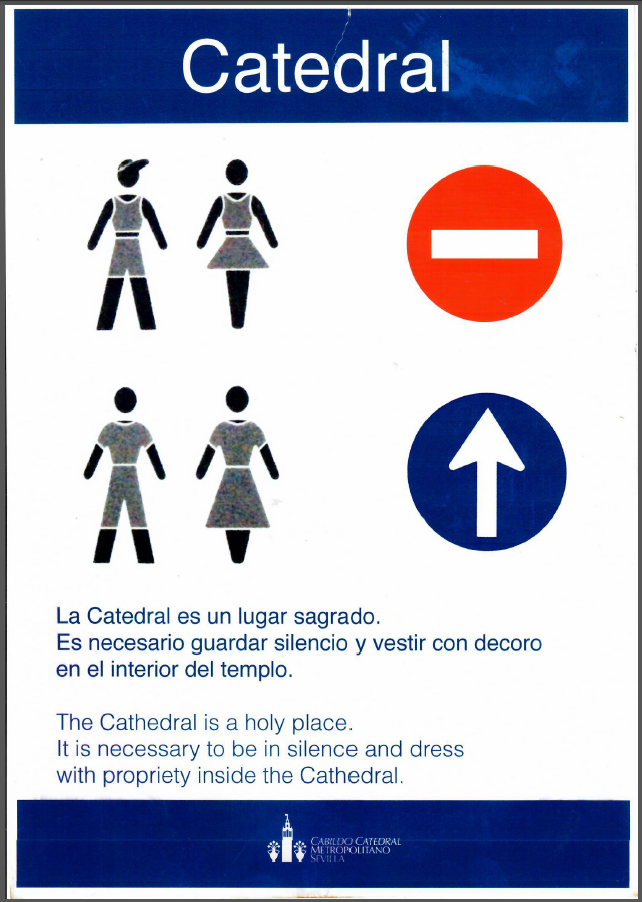
Places to stay in Seville
Because we want you to discover the beauties of Seville’s surrounding area, we provide you with a selection of the best villas in Seville. Check them all out and choose your favourite one.
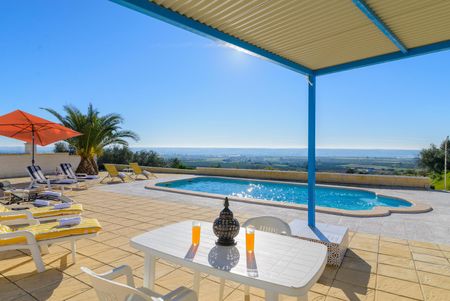
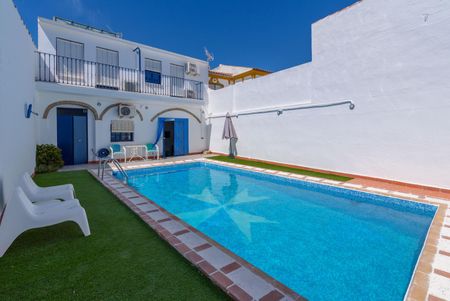
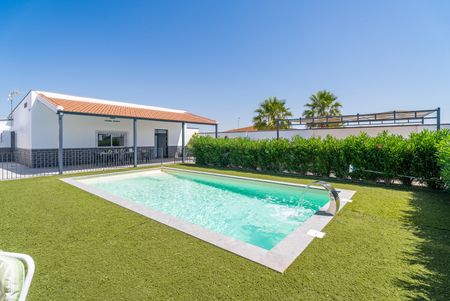
Seville Cathedral is no mystery for you now!
Have you ever visited the Cathedral of Seville? Which are your favourite features of the biggest Gothic cathedral in the world? Tell us in the comments!

